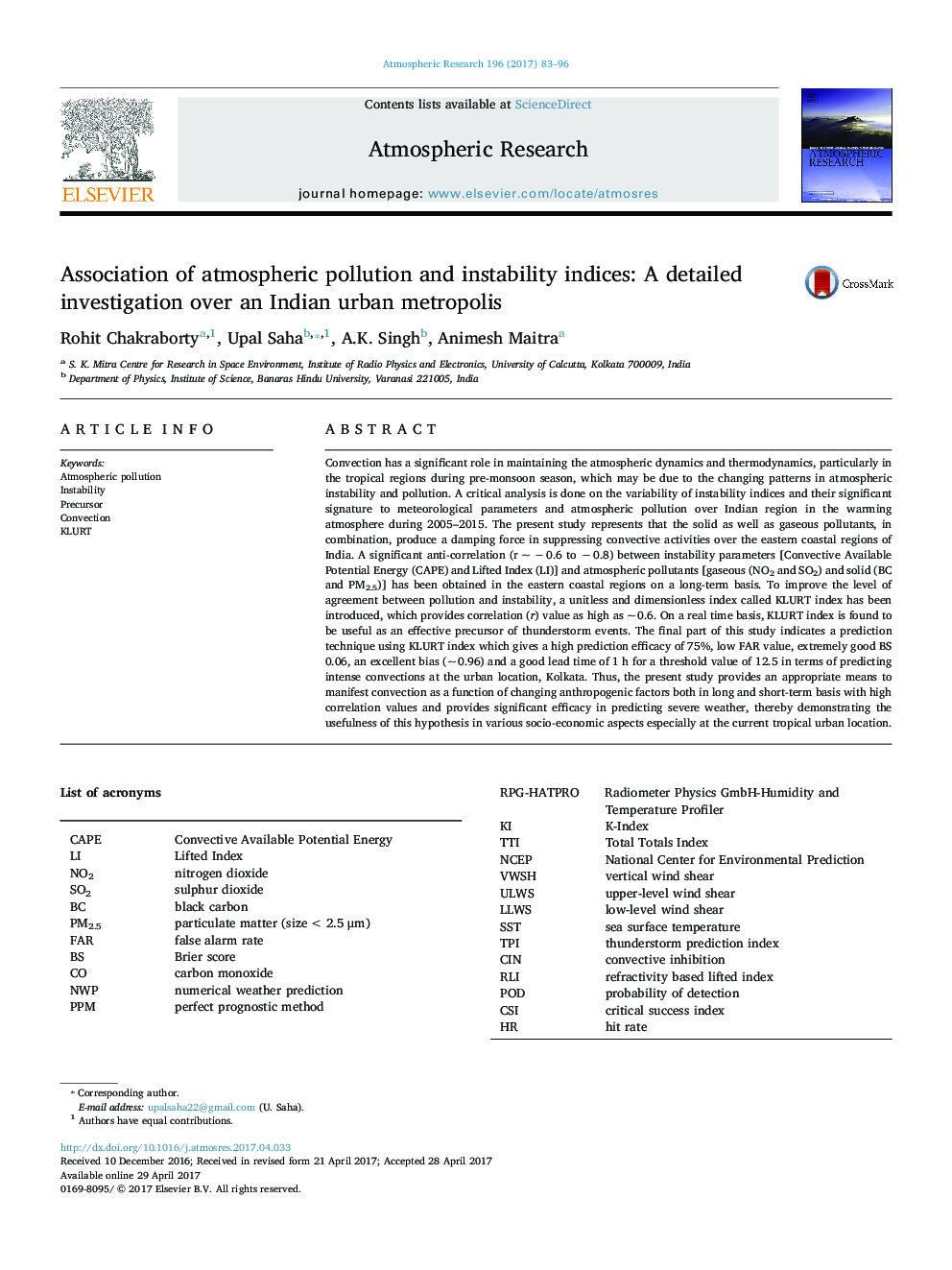| Article ID | Journal | Published Year | Pages | File Type |
|---|---|---|---|---|
| 5753586 | Atmospheric Research | 2017 | 14 Pages |
â¢Effect of air pollutants on severe convection has been studied over urban metropolis.â¢Pollutants (NO2, SO2, BC and PM2.5) inhibit the severe convective growth over India.â¢KLURT index is newly proposed to predict severe convective events over urban region.â¢KLURT has a prediction efficiency of 75%, false alarm of 35% with 1 h lead time.â¢This study provides totally new concept to measure and predict severe thunderstorms.
Convection has a significant role in maintaining the atmospheric dynamics and thermodynamics, particularly in the tropical regions during pre-monsoon season, which may be due to the changing patterns in atmospheric instability and pollution. A critical analysis is done on the variability of instability indices and their significant signature to meteorological parameters and atmospheric pollution over Indian region in the warming atmosphere during 2005-2015. The present study represents that the solid as well as gaseous pollutants, in combination, produce a damping force in suppressing convective activities over the eastern coastal regions of India. A significant anti-correlation (r ~ â 0.6 to â 0.8) between instability parameters [Convective Available Potential Energy (CAPE) and Lifted Index (LI)] and atmospheric pollutants [gaseous (NO2 and SO2) and solid (BC and PM2.5)] has been obtained in the eastern coastal regions on a long-term basis. To improve the level of agreement between pollution and instability, a unitless and dimensionless index called KLURT index has been introduced, which provides correlation (r) value as high as ~ 0.6. On a real time basis, KLURT index is found to be useful as an effective precursor of thunderstorm events. The final part of this study indicates a prediction technique using KLURT index which gives a high prediction efficacy of 75%, low FAR value, extremely good BS 0.06, an excellent bias (~ 0.96) and a good lead time of 1 h for a threshold value of 12.5 in terms of predicting intense convections at the urban location, Kolkata. Thus, the present study provides an appropriate means to manifest convection as a function of changing anthropogenic factors both in long and short-term basis with high correlation values and provides significant efficacy in predicting severe weather, thereby demonstrating the usefulness of this hypothesis in various socio-economic aspects especially at the current tropical urban location.
